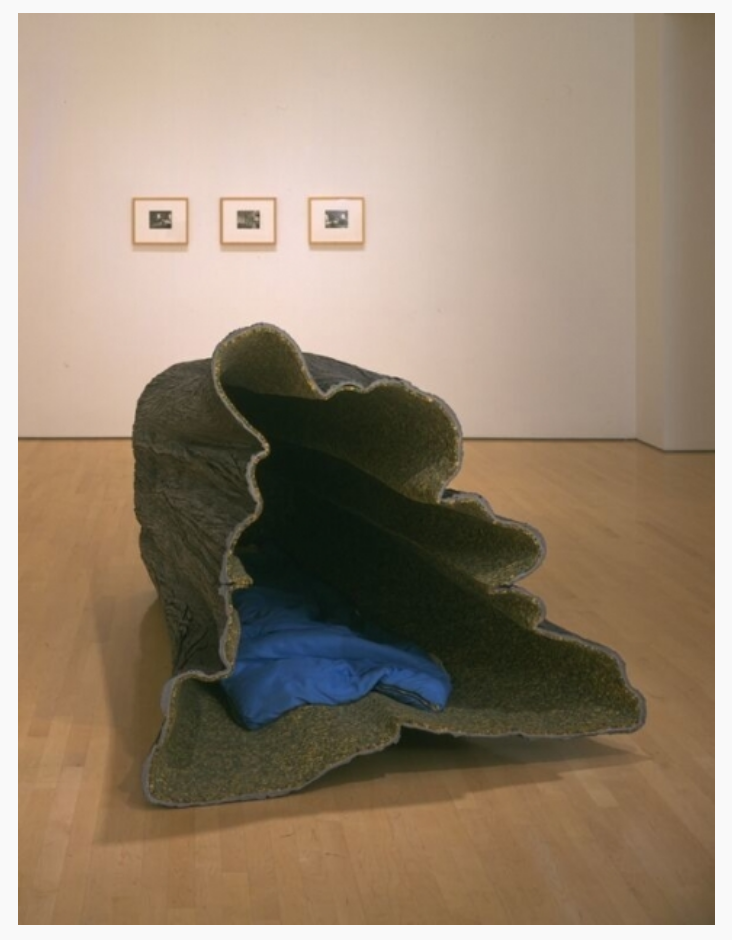Introduction
The National Gallery of Canada is a place where visitors can fully immerse into the atmosphere of art, culture, and history. At present, the venue offers several displays including permanent and temporary ones. The purpose of this paper is to review the exhibition “Canadian and Indigenous Art: 1968 to Present” and analyze its messages.
Description
The exhibition was launched on May 3, 2017, and it will end on April 30, 2018 (National Gallery of Canada, 2017). The author has attended it twice to ensure that both major and minor details have been noted. The visits were made on September 28, 2017, and October 2, 2017. The display has several curators since it is rather large-scale, and the work on its creation has been quite enduring.
The senior curators are Katerina Atanassova, Christine Lalonde, Andrea Kunard, René Villeneuve, and Adam Welch (National Gallery of Canada, 2017). The institution on the platform of which the exhibition has been initiated is the National Gallery of Canada, which has been recently transformed so that it is more comprehensive. The main objective of the display, as well as that of the institution, is to exhibit the story of art in Canada.
Visual and Material Culture
The visual and material culture on display is rich. To be more precise, the recognized masterpieces created by the talented Canadian and indigenous artists are presented there. The chronotope within the works of art encompasses the latest decades of the 20th century until the present time. Importantly, the spatial organization is a strategy, which helps to make the meaning of the exhibition more explicit (Rose, 2016). Thus, all of the items have been arranged in chronological order to ensure that the viewers can follow the evolution and development of indigenous art. Each thematic area is rather spacious to allow the viewer to have an intimate dialogue with the art object.
Notably, the exhibition includes sculptures, paintings, photos, and prints. Besides, visitors can observe geometric abstract paintings, which provide room for imagination and individual analysis. The distinct feature of this display is the fact that the audience can reacquaint themselves with well-known Canadian artists (National Gallery of Canada, 2017). Also, the public can discover the latest acquisition by the art gallery.
Many of the art objects are works on paper; however, some items have been created using untraditional and other distinguished materials and fabrics. To achieve such an impressive scale, the institution has borrowed some of the art objects from other museums. Also, private owners and collectors of indigenous art have provided their artistic possessions so that other people also have an opportunity to observe the cultural heritage of the country.
To ensure that the general society comprehends the meaning of the exhibits, the authorities in the field of art have provided their assistance and guidance in interpreting the pieces. The display protocols have been compiled in a manner, which is understandable and appreciated by both connoisseurs of art and the general public (National Gallery of Canada, 2017). The approach employed by the gallery is aimed at community engagement since art belongs to all citizens; therefore, they should have proper and equal access to indigenous art objects.
Implicit Messages
The purpose of grouping the art objects is to show how the visual culture of Canada has been shaped and to stimulate the cultural identity of citizens. It reveals the way multiple themes have created the particular Canadian landscape starting from the second decade of the 20th century. According to Kotchemidova (2005), “the vehicle of communication helps determine the sensory and symbolic mode of encoding the message” (p. 10).
The compilation of sculptures, drawings, images, and installations allows the population to track such crucial milestones as the feminist movement in artistic expression and so on. The core message of the exhibition is that the Canadian population should build a strong connection with their land. An important part of the display is Inuit art, which is not known to many Canadians. It has been exhibited to help residents build a stronger identification with the country. To convey this message, the objects have been organized into thematic spaces or grouped (as exhibited in Image 1 in the attachment section). It has been done to build a narrative review of art in Canada.
The visitors can get acquainted with the collection using an audio guide, relying on print sources and protocols. Also, the navigation and design of the exhibition have been built efficiently and clearly to accompany and guide the guests from one milestone to another. It helps them to understand the importance of certain events and draw their conclusions about the author’s statement. Moreover, the exhibition is built in such a way as to keep the viewers in suspense and lead them while telling about the cultural heritage of Canada. Sontag (1977) claimed that people need “to have reality confirmed” (p. 24).
Therefore, the strategy employed by the curators helps them in conveying the meaning of the exhibition, which is to present the entire worldview and stimulate the identification of citizens with Canada through direct interaction with indigenous art.
Conclusion
Thus, it can be concluded that the exhibition “Canadian and Indigenous Art: 1968 to Present” is the compilation of various objects of visual and material culture. The display has an important meaning, which is to build the identity of the population with the country through their intense contact with the objects created by Canadian artists. Therefore, the items have been grouped masterfully to ensure a narrative review of art development.
References
Kotchemidova, C. (2005). Why we say “cheese”: Producing the smile in snapshot photography. Critical Studies in Media Communication, 22(1), 2-25.
National Gallery of Canada. (2017). Canadian and indigenous art: 1968 to present.
Rose, G. (2016). Visual methodologies: An introduction to researching with visual materials (4th ed.). Thousand Oaks, CA: SAGE.
Sontag, S. (1977). On photography. New York, NY: Dell Publishing.
Attachment
